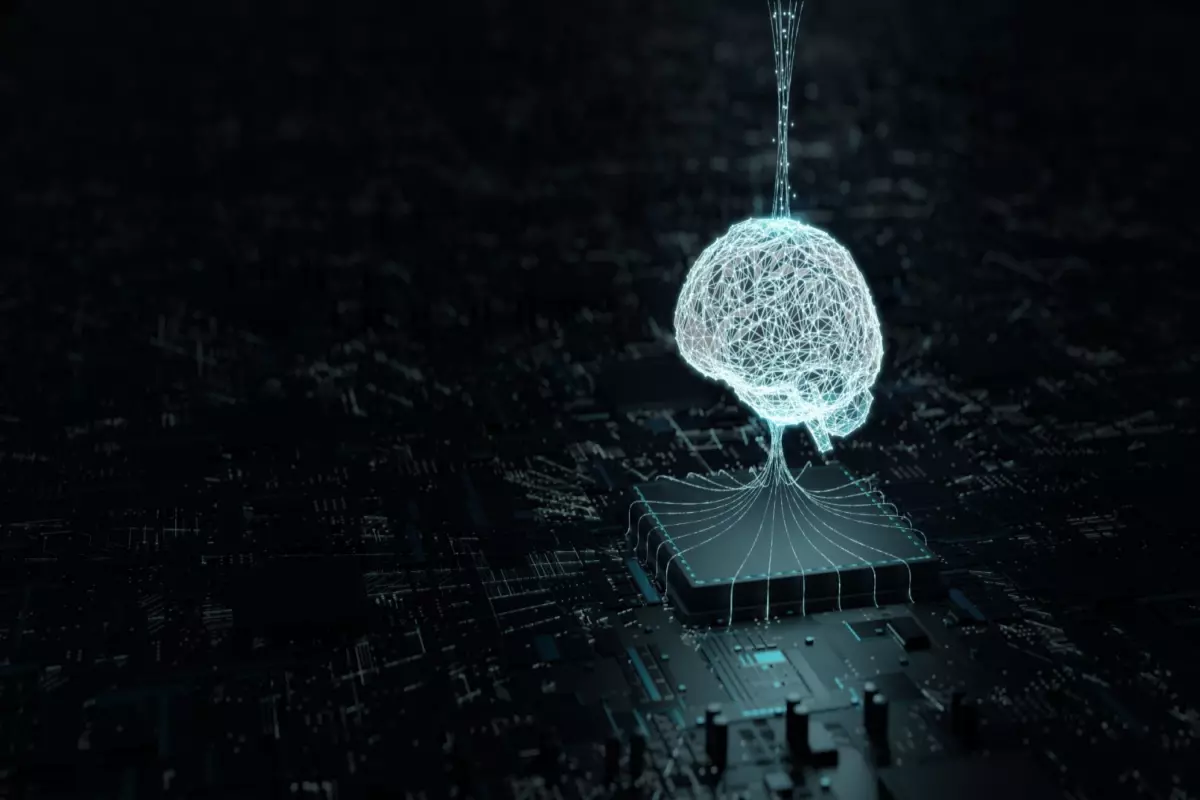Exploring the Core Concepts of Artificial Intelligence
Ever wondered how machines can learn, adapt, and even outsmart humans in various tasks? Today, artificial intelligence (AI) is not just a futuristic notion but a real field that is transforming our world. So, how exactly does this technology work, and what are the main artificial intelligence concepts?
AI is everywhere – from the voice assistants in our phones to sophisticated data analysis tools, and it’s evolving at lightning speed. Whether you’re a curious newbie or a tech enthusiast, we’re unpacking these concepts in this comprehensive guide. Read on to find out more!
Understanding AI
Artificial intelligence is a branch of computer science that aims to create machines that perform tasks that require human intelligence. These tasks include recognizing speech, making decisions, solving problems, identifying patterns, and understanding languages.

AI completes these tasks by processing large amounts of data and learning from it, which is called machine learning (ML). AI systems use algorithms to process data, learn from examples, identify patterns, and make decisions.
As the algorithm processes more data, it adapts and improves automatically over time to offer more accurate results and predictions.
The journey of AI began in the mid-20th century. John McCarthy first coined the term “artificial intelligence” in 1956 during a workshop at Dartmouth College, where the concept of machine intelligence was first proposed and debated. Initially, this new concept was met with optimism and significant success, which led to the development of programs that would play checkers and solve algebra problems.
However, during the 1970s, funding and interest in AI were reduced as its limitations became prevalent. This period was known as the “AI winter.” Progress slowed, but data scientists continued working on its foundations, particularly in developing theoretical models that underpin AI.
In the 1980s, AI experienced a revival as algorithms became more complex and computationally powerful. In the 1990s and early 2000s, AI began to be employed in various technologies, from logistics to manufacturing to the first intelligent personal assistants.
The last decade has seen remarkable advancements thanks to improvements in computer processing power, deep learning, and neural networks. Today, AI has the potential to enhance human capabilities and improve efficiency through voice and image recognition and autonomous vehicles for sophisticated uses in healthcare.
Basic Concepts of Artificial Intelligence
To truly grasp how artificial intelligence functions, you need to understand its foundational concepts. These AI concepts form the building blocks of AI and illustrate how machines interpret, learn, and interact with the world. In this section, we’ll cover basic AI concepts, including machine learning, neural networks, deep learning, and natural language processing.
Machine Learning (ML)
Machine learning is a subset of AI that focuses on a machines’ ability to receive data and learn from it, improving their accuracy over time without being explicitly programmed to do so. Unlike traditional programming, where humans explicitly define the rules and logic the software follows, machine learning algorithms autonomously identify patterns and make predictions based on the data they process.
This shift from rule-based programming to data-driven learning is what sets machine learning apart and allows it to adapt to new situations independently. ML applications span a wide range of industries, and some examples include:
- Healthcare: Predicting patient outcomes and assisting in diagnosis and treatment plans.
- Finance: Analyzing market data to predict stock trends and inform trading decisions.
- Autonomous Vehicles: Interpreting sensory data to make real-time driving and parking decisions.
- Retail: Personalizing shopping experiences and optimizing inventory management.
- Entertainment: Enhancing user recommendations and personalization in streaming services.

There are three main types of machine learning you should be aware of. Let’s explore each in more detail to understand how they tackle specific challenges and apply them to real-world scenarios.
Supervised Learning
In supervised learning, the models are trained using labeled datasets. These datasets consist of input-output pairs where the correct output (label) for each input is known. The model’s task is to learn to produce the output associated with new inputs based on the patterns it has recognized during training.
A practical example of supervised learning is in email spam detection. In this application, the algorithm is trained on a large collection of emails that are pre-labeled as “spam” or “not spam.” It learns to recognize the features of emails most indicative of spam, such as specific words, sender’s address, or formatting. Once trained, the model can then analyze new emails and accurately predict whether they are spam, helping filter out unwanted emails automatically.
Unsupervised Learning
As opposed to supervised learning, unsupervised learning operates without labeled data, meaning the model learns to identify patterns directly from the input data without any guidance on what outcomes to predict. This is similar to self-learning. The algorithm organizes the data into clusters, dimensions, or associations based on similarities and differences among the input features, which can reveal insightful trends.
An example of unsupervised learning is customer segmentation in retail. In this scenario, a model might analyze the purchase histories and browsing behaviors of thousands of customers without knowing any specific groupings in advance. Through unsupervised learning, the model can identify distinct groups of customers with similar buying habits, which retailers can then target with personalized marketing strategies.
Reinforcement Learning
Finally, the third type of ML is reinforcement learning, where an agent learns to make decisions by interacting with an environment. An agent is any entity that makes decisions, such as a software program or a robot, while the environment includes everything the agent interacts with.
The learning process is based on actions and rewards: an agent performs actions within the environment, which results in rewards or penalties. The goal of the agent is to maximize its total reward over time.
One application of reinforcement learning is algorithmic trading. ML systems can learn to make decisions by analyzing stock market data and adjusting their buy and sell strategies over time based on rewards (profit) and penalties (loss). For instance, investment firms use reinforcement learning models to optimize buy and sell actions to maximize returns, adapting to market changes dynamically.
Neural Networks and Deep Learning
Neural networks are another basic AI concept inspired by the structure and function of the human brain. Essentially, a neural network is a system of interconnected nodes, or “neurons,” which process information in a layered, hierarchical manner.
Each node in the network processes the input it receives and passes the output it generates to the next layer. The network learns by adjusting the strength of the connections based on the accuracy of its outputs during training. Over time, this allows the network to make increasingly accurate predictions and make more precise decisions.
When these networks are composed of multiple layers, data scientists refer to them as “deep” neural networks, which is where the term “deep learning” comes from. Deep learning in data science uses these complex neural networks to model and solve problems involving large amounts of data.
The layers of neurons extract progressively more complex features from the data they are trained on, making deep learning particularly effective for tasks that require recognition of intricate patterns and automated decision-making.
Practical examples of deep learning in various industries include:
- Image Recognition: Deep neural networks power the facial recognition systems in smartphones and social media platforms. They learn to identify and differentiate individual faces with high accuracy by analyzing thousands of features from images during the training phase.
- Medical Diagnostics: In healthcare, deep learning algorithms are increasingly used to diagnose diseases more accurately and rapidly than traditional methods. For instance, deep learning models can analyze medical imaging data to detect anomalies such as tumors in X-rays or MRIs, often with greater accuracy than human radiologists.
- Financial Fraud Detection: Financial institutions employ deep learning to monitor transaction data in real-time, detecting patterns indicating fraudulent activities. These systems identify subtle anomalies that may indicate fraud, like multiple transactions in a short period, helping to secure users’ financial assets.
- Autonomous Vehicles: Another exciting application is in autonomous driving technology, where deep learning algorithms interpret sensory data to make real-time navigation decisions. These algorithms process vast amounts of visual and sensor data to recognize traffic signs, detect pedestrians, and manage complex driving scenarios, contributing to the safety and efficiency of self-driving cars.
Natural Language Processing (NLP)
Natural language processing (NLP) is another core AI concept that focuses on the interaction between computers and humans using natural language. This refers to any language naturally used by humans for everyday communications, including English, Spanish, Mandarin, and more. The goal of NLP is to enable computers to understand, interpret, and respond to human language in meaningful and valuable ways.
This field combines computational linguistics with machine learning and deep learning techniques to build models capable of processing and generating natural language. In NLP, the model works in step-by-step components where each subsequent step builds on the previous one to understand and analyze the text progressively. The key components of NLP include:
- Tokenization: Splitting text into smaller units like words, phrases, or sentences.
- Part-of-Speech Tagging: Identifying the grammatical role of words (noun, verb, adjective, etc.)
- Named Entity Recognition (NER): Recognizing proper names, dates, locations, and other significant entities in text.
- Sentiment Analysis: Determining the sentiment or emotion expressed in a piece of text.
- Dependency Parsing: Analyzing the grammatical structure of sentences to understand relationships between words.
- Response Generation: Creating contextually appropriate responses based on analysis during the previous stages and gathering information from data banks.
One of the most recognizable applications of NLP is in virtual assistants like Siri, Alexa, and Google Assistant. These systems use speech recognition to convert spoken language into text, analyze the text to understand user queries, and then generate natural-sounding responses.
The future of NLP in AI holds incredible potential as models become more sophisticated at understanding and generating human-like text. Emerging technologies like GPT-4 and BERT are pushing the boundaries, enabling even more accurate language translation, advanced conversational agents, and nuanced sentiment analysis. As these models evolve, we can expect more seamless human-computer interactions through more intuitive chatbots and personalized virtual assistants.
Additional Key Concepts and Basics of Artificial Intelligence
While these were the key AI concepts, in reality, they extend to far more than just these core areas. In this section, we’ll explore other trending topics in AI and machine learning, including computer vision, robotics, and ethical AI.
Computer Vision
Computer vision empowers machines to interpret and understand visual information from the world, just like humans. By analyzing and processing digital images or videos, computer vision systems can recognize objects, detect patterns, and even make decisions based on what they “see.”
From facial recognition in smartphones to quality control in manufacturing and diagnosing diseases, computer vision is everywhere. It’s also fundamental in enabling autonomous vehicles to recognize road signs, detect pedestrians, and navigate safely. In agriculture, computer vision helps farmers monitor crop health and optimize yields through aerial imagery analysis.
Robotics and AI
Robotics and AI are a natural pairing, combining the physical capabilities of robots with the decision-making power of artificial intelligence. Integrating AI into robotics allows machines to learn from their environments, adapt to new challenges, and perform increasingly complex tasks.
The combination of robotics and AI has birthed these humanoids:
- Industrial Robots: In manufacturing, AI-powered robots are used for assembly, welding, and quality control, reducing costs and improving productivity.
- Service Robots: Robots like SoftBank’s Pepper and Temi act as customer service agents in retail and hospitality, providing information and handling customer inquiries.
- Healthcare Robots: Robotic systems such as da Vinci assist surgeons with precision tasks, while exoskeleton robots help patients with mobility issues to move again.
- Exploratory Robots: Autonomous drones and underwater robots explore hazardous environments that are inaccessible to humans, such as deep-sea exploration and disaster zones.
Ethical AI and Bias
As AI continues to integrate into our lives, enterprises and individuals alike increasingly worry about ethical AI and biased decisions. Ethical AI refers to the development and use of artificial intelligence in a transparent, fair, and respectful manner.
AI systems can inadvertently reinforce societal biases prevalent in the data they are trained on. For instance, facial recognition software has shown racial and gender biases, leading to inaccuracies and unfair treatment in courts, credit organizations, and more.
Different technologies and frameworks are being developed to combat these challenges. For instance, IBM’s Fairness 360 Kit provides tools to help detect and eliminate bias in AI models. Also, Google’s Explainable AI increases the transparency of AI systems, offering clearer insights into their decision-making processes.
Challenges and Future of AI
While the future of AI is promising, significant challenges remain that must be addressed to unlock its full potential. First, bias in AI systems remains an issue, which can lead to unfair outcomes and discrimination. Moreover, privacy concerns around data collection and misuse need stricter regulations and safeguards, including comprehensive data protection laws and protocols.
Another challenge is the lack of transparency in AI decision-making, often referred to as the “black box” problem. Even experts struggle to understand how some models arrive at their conclusions. This raises the question of accountability and can erode public trust in AI.
Looking ahead, the future of AI lies in creating systems that are not only powerful but also ethical and explicable. Advances in explainable AI (XAI) aim to make model decisions more transparent and understandable by using features like importance scoring, visual explanations, and natural language summaries.
Feature importance scoring helps identify which parts of the input data are most influential in a model’s decision-making process, while natural language summaries translate the technical outcomes of AI processes into easy-to-understand text. Interdisciplinary collaboration between AI developers, policymakers, and ethicists is needed to develop comprehensive frameworks that ensure responsible AI employment.
Sum Up
Machine learning and artificial intelligence are everywhere, and it looks like they’re not going anywhere anytime soon. With sustained research, AI will continue revolutionizing industries while aligning more closely with societal values. Ultimately, the responsible and inclusive development of core AI concepts will shape the future where technology is a force for good, benefiting organizations and individuals.
Try our real-time predictive modeling engine and create your first custom model in five minutes – no coding necessary!
- Fully operational AI with automated model building and deployment
- Data preprocessing and analysis tools
- Custom modeling solutions
- Actionable analytics
- A personalized approach to real-time decision making
Table of Contents
- Understanding AI
- Basic Concepts of Artificial Intelligence
- Machine Learning (ML)
- Supervised Learning
- Unsupervised Learning
- Reinforcement Learning
- Neural Networks and Deep Learning
- Natural Language Processing (NLP)
- Additional Key Concepts and Basics of Artificial Intelligence
- Computer Vision
- Robotics and AI
- Ethical AI and Bias
- Challenges and Future of AI
- Sum Up



